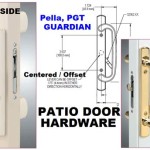How to Power Wash a Patio
Power washing a patio can be a rewarding task, transforming a dirty, stained surface into a clean and inviting space. This process uses high-pressure water to remove dirt, grime, moss, and mold, restoring the original beauty of your patio. With the right equipment and approach, even novice DIYers can achieve professional-looking results. This guide will walk you through the steps involved in power washing your patio, providing insights on safety, preparation, and execution for a successful cleaning experience.
1. Preparing for Power Washing
Proper preparation is crucial for a successful power washing project. Before engaging in any power washing activity, take the necessary steps to ensure a safe and efficient cleaning process.
Firstly, assess the condition of your patio. If there are loose tiles or cracked areas, it is essential to address these issues before proceeding with power washing. Loose tiles can become dislodged during the high-pressure cleaning, while cracks can widen due to the force of the water. It is recommended to consult with a professional if significant repairs are required.
Secondly, clear the patio area. This involves removing any furniture, plants, or other objects that might obstruct the cleaning process or become damaged by the water pressure. Additionally, ensure that any nearby electrical outlets and appliances are protected from water splashes.
Lastly, review the manufacturer's instructions for your power washer. Understanding the operating procedures and safety guidelines will help prevent accidents and ensure optimal performance.
2. Choosing the Right Power Washer
Selecting the appropriate power washer is paramount for achieving the desired cleaning results. Power washers are categorized based on their pressure output, measured in pounds per square inch (PSI) and gallons per minute (GPM). The ideal pressure level for patio cleaning typically falls between 1,500 and 2,000 PSI, as this range provides sufficient cleaning power without causing damage to the surface.
The type of patio surface also plays a crucial role in determining the appropriate power washer. For example, delicate materials like brick or stone may require a lower pressure setting to avoid erosion. On the other hand, concrete patios can withstand higher pressure levels.
Consider the size of your patio when choosing a power washer. If you have a large patio, a powerful model with a higher GPM rating will be more efficient. However, smaller patios can be adequately cleaned with a less powerful power washer.
3. Power Washing Techniques
Once you have prepared your patio and chosen the right power washer, you are ready to begin the cleaning process. Start by thoroughly rinsing the patio with water to loosen any loose dirt or debris.
Next, apply a cleaning solution, if needed. For stubborn stains, you can use a dedicated power washing detergent. Always follow the instructions provided by the detergent manufacturer.
Now, begin power washing the patio, working methodically in sections. Hold the power washer nozzle at a 45-degree angle to the surface and move it slowly and steadily, maintaining a consistent distance. Avoid lingering on one spot for too long to prevent damaging the surface.
Focus on areas with stubborn stains or accumulated dirt. Repeat the process as needed until the patio is clean to your satisfaction.
Finally, rinse the patio thoroughly with clean water to remove any residual soap or debris. Allow the surface to dry completely before placing furniture or other objects back on the patio.

How To Power Wash Your Patio Angi

How To Clean Patio Slabs

How To Jet Wash A Patio Don T Cause Damage

Pressure Wash A Patio Youtube

Best Way To Clean A Concrete Patio Chalking Up Success

How To Pressure Wash A Concrete Driveway

How To Pressure Wash A Patio Washing In Maryland

How To Clean Paving Patios A Comprehensive Guide Awbs

How To Clean Patio Slabs R J Landscapes London

How To Clean Patio Slabs Kärcher International








